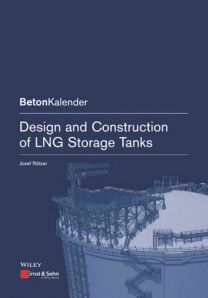Table of contents
1 Introduction
2 History of natural gas liquefaction
2.1 Industrialisation and energy demand
2.2 The beginnings of gas liquefaction
2.3 The first steps towards transport in ship
2.4 Algeria becomes the first exporter
2.5 Further development with peak-shaving plants
2.6 The first German LNG tank in Stuttgart
2.7 Wilhelmshaven - the attempt to establish a German receiving terminal
2.8 The liquefaction of gas in Australia
2.9 Pollutant emissions limits in the EU
3 Regulations and their scope of applicability
3.1 History of the regulations
3.2 EEMUA publication No. 147 and BS 7777
3.3 LNG installations and equipment - EN 1473
3.4 Design and construction of LNG tanks - EN 14620
3.5 API 620 - the American standard for steel tanks
3.6 API 625 - combining concrete and steel
3.7 ACI 376 - the American standard for concrete tanks
4 Definition of different tank types
4.1 Definition and development of the different types of tank
4.2 Single containment tank system
4.3 Double containment tank system
4.4 Full containment tank system
4.5 Membrane tank system
5 Performance requirements and design
5.1 Performance requirements for normal operation
5.2 Thermal design
5.3 Hydrostatic and pneumatic tests
5.4 Soil survey, soil parameters and permissible settlement
5.5 Susceptibility to soil liquefaction
6 Tank analysis
6.1 Requirements for the analysis of the concrete structure
6.2 Requirements for the model of the concrete structure
6.3 Strut-and-tie models for discontinuity regions
6.4 Liquid Spill
6.5 Fire load cases
6.6 Explosion and Impact
7 Dynamic analysis
7.1 Theory of the sloshing fluid
7.2 Housner`s method
7.3 Veletsos` method
7.4 Provisions in EN 1998-4, annex A
7.5 Seismic design of LNG tanks
8 Construction
8.1 Construction phases and procedure
8.2 Wall formwork
8.3 Reinforcement
8.4 Prestressing
8.5 5 Tank equipment (inclinometers, heating)
8.6 Construction joints
8.7 Curing of concrete surfaces
9 Summary
References



